Download a PDF of press reviews
Venus and Adonis

-
D’ye Ken John Blow?
Stage Director David R. Gammons made very effective use of Wait and Cutter’s lofty and florid 1889 Registry of Deeds Courtroom, casting a particularly bright light on the oh-so-very-apt frieze of putti (with a rifle-toting minuteman substituting for Cupid). He kept the singers and dancers in constant motion, placing them in the balcony, on staircases, on sidestages, and within the aisles, often all at once. ...Since the singers and dancers often moved together (and dancers sometimes doubled singers), their roles blurred, especially because many singers actually could move; we saw no "stand and deliver," really. Singers and dancers interacted with each other rather than aiming for the audience. Alissa Cardone choreographed lots of steps, gestures and tableaux (we imagined Martha Graham, Isadora Duncan, Jose Limon, Twyla Tharpe, and Gypsy Rose Lee) for the enthusiastic Terpsichoreans who rarely absented themselves from the stage. In partnership with Gammons, Cardone also found appealing ways for the singers to move. ...With highly imaginative and effective use of space and forces, this small company can outperform its larger and older brethren.- Lee Eisman, Boston Musical Intelligencer
People, Places, and Things

-
Marianna Bassham’s brilliant disguises in ‘People, Places & Things’
Few directors can engineer the trip across the border from real to not-real with more bracingly discombobulating theatricality than Gammons, who has guided some of the most memorable SpeakEasy productions of the past decade, from “Hand to God” to “The Whale” (starring Kuntz and Elwood while she was still a student at Emerson) to “Red” to “The [Expletive] with the Hat.”). Gammons keeps the emotional temperature high and the coming-apart-at-the-seams vibe constant in “People, Places & Things.” This is especially so during the hallucination scenes, which Gammons and his design team (lighting designer Jeff Adelberg, sound designer David Wilson, and video designer Adam Stone) turn into genuinely searing experiences.- Don Aucoin, The Boston Globe
-
SpeakEasy’s ‘People. Places & Things’ Takes Us Into the Belly of Addiction
People, Places & Things, SpeakEasy Stage Company’s first-rate, must-see production, covers a lot of ground and checks a lot of boxes. Playwright Duncan Macmillan unsentimentally tackles the uncertain journey from addiction and recovery and the many shapes and forms it can take. For two and a half hours, the audience is in the thick of the raw process of rehab, detox, group therapy, relapse and the harrowing realization of what “one day at a time’ really looks like. If this sounds like a maudlin, predictable trope, it is anything but. Working with Macmillan’s sharp, incisive script, director David R. Gammons has created a phantasmagoria with flashing strobes (light design by Jeff Adelberg) and vibrating sounds (David Wilson) that make us feel like we are marching right beside these crumbling, addicted minds on the verge of self-destruction. He has also amassed a splendid ensemble cast to bring the script to life, most notably the exceptionally talented Marianna Bassham as Emma. Her performance alone is reason enough to hightail to BCA.- Shelley A. Sackett, Theater Mirror
-
Marianna Bassham leads an all-star SpeakEasy cast in a bracing tale of addiction and rehab
Orange soda and karaoke are on offer for those graduating rehab in “People, Places & Things,” a probing dive into addiction. The highly lauded Duncan Macmillan play, with riveting direction by the Elliot Norton Award-winning David R. Gammons, is as stimulating as it is afflictive in a SpeakEasy Stage Company production running through March 5. …Bassham excels as Emma, who is always putting on a show; eager to be seen, but not truly. She’s a charming addict, quick to hurl a pithy or startling line to whoever is listening. Later, when her body trembles from too much of everything in her system, she’s even better. …Gammons portrays the chaos of Emma’s mind artfully. He uses strobe lights, movement and dialogue in slow motion, and Emma’s printed likeness held over the faces of the ensemble cast. These paper faces represent perhaps, all her warring selves, colliding, vying for space and usurping Emma’s desire or ability to get and stay clean.- Jaqueline Sinclair, WBUR
Savitri

-
Young Cast Shines in Holst’s Savitri
With the dazzling work of stage director David R. Gammons, Cambridge Chamber Ensemble transformed the entire 47′ x 57′ Great Hall into the performance space, placing the cast amidst the audience as well as on stage. Visually and aurally, this offered a feast of the senses very close to what Holst envisioned as an outdoors in as natural a setting as possible, to envelope the audience inviting them to become a part of the drama.- Stephen Martorella, The Boston Musical Intelligencer
Vanity Fair
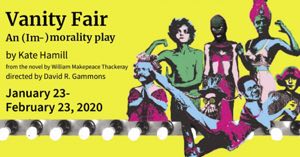
-
A wildly inventive Vanity Fair that doesn’t mind its manners
All dramatists live, apprehensively, with the knowledge that once it leaves their hands, any play is only as good as its interpreters. On that score, playwright Kate Hamill lucked out when the gifted David R. Gammons opted to direct — and, as is his custom, design — Hamill’s stage adaptation of “Vanity Fair,” William Makepeace Thackeray’s 1848 novel of manners. The result is an exhilaratingly inventive, go-for-broke production by Underground Railway Theater at Central Square Theater…“Vanity Fair” is driven by Gammons’s trademark creative vigor from the opening moments, when its characters jerk to life-like mechanical toys. An impresario called the Manager — played by the ever-reliable Debra Wise, who is also the URT’s artistic director — addresses the audience, setting both the scene and the waggish tone of “Vanity Fair’s.” … Gammons’s exceptionally detailed set consists of half a dozen jam-packed, side-by-side dressing rooms, suggestive of parallel lives. Whether for costume and wig changes or scenic transitions, the characters of “Vanity Fair” keep disappearing into those rooms, but most of the action transpires on a bare, narrow stage in front of them …– Don Aucoin, The Boston Globe
-
She Sees it, She Likes it, She Wants it, She Gets it: VANITY FAIR
There are two directors in Boston that I would wholeheartedly call fearless: One is Igor Golyak of Needham’s Arlekin Players, and the other is David R. Gammons, whose current mounting of Kate Hamill’s Vanity Fair runs at Central Square Theater… With Gammons at the helm, you never know quite what you’re in for. But whatever it is, you know that it will be a full-throttle, meticulously designed, high-concept adventure… Gammons’s extraordinary vision and first-rate cast make Vanity Fair into something better than it ought to be... But each time I found myself growing tired of the business and the breakneck speed of the action, I’d get pulled back in by the charming cast and the sheer creativity of it all… A journey into the mind of David Gammons is always a journey worth taking, even when the material isn’t as satisfying. Here, the pains are minor, thanks mostly to top-shelf vision and one of the most delicious ensemble casts of the year.– Christopher Ehlers, Dig Boston
-
Excess Rules in Wild Vanity Fair
I'm going to confess that when I first walked into the theater and got a taste of what was going to be pelted at me for the next few hours, my first thought was: "Oh God, there's no way in hell that this thing is going to work." The production seemed like an unholy marriage of contrasting artistic sensibilities that would speed towards disaster. And yet, the extremes of all of the various elements manage to balance each other out and the marriage stays strong. Shows what I know. It ends up being a wild and enjoyable evening of populist theatrical fun... Here on stage, we're getting the tale told through a high-camp pop culture lens. When Becky Sharp bursts through the door to make her entrance, it's with a guitar case in tow and a leather jacket across her shoulders. She's James Dean, rebel without a cause (or maybe Brando is the better comparison)… The production exists in a strange nether world where the setting of a high-class drawing room is established with a beer clock and a plug-in fire. You can't take anything seriously. You're always slightly chuckling… This is perhaps the kind of production that Fellini would have made had he started doing stage work. There's a fascination with the decadence the characters are indulging in, and in the awareness that their behavior is all an act. The set design (also by Gammons) gives us a long row of dressing rooms that the actors will pop in and out of. The walls are missing, leaving only the framing, so that we can peak into those private spaces and get hints of what these actors are doing behind closed doors. At every opportunity, the grotesque natures of the characters are stretched out for us to view. One long sequence is basically an extended fart joke. (Let it never be said that we were ever above such delightfully low humor.) And although the production is interested in the characters, and occasionally aligns us with them, I think there's also a healthy disdain for the kind of moneyed world that they live in… And what does this all come to? That's the question of "Vanity Fair." The wheel of fate keeps turning and you'll have to see for yourself where it all lands. Buckle in.– James Wilkinson, Edge Media Network
Frankenstein
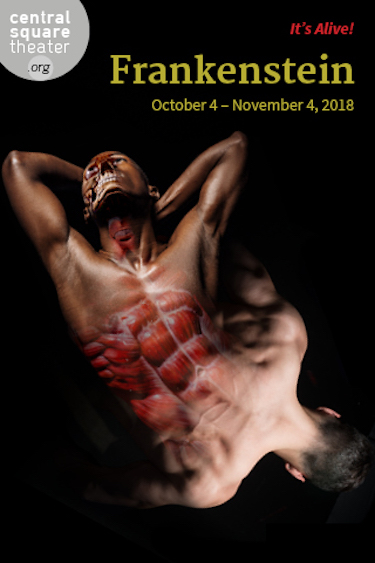
-
Frankenstein — It’s Really Alive!
One by one, the characters/performers emerge from the monster, ripping themselves from the theatrical amalgam to become an atomized self. Each actor is given a chance to be the lead voice of the creature — as well as to embody another character. The most consistent feature of the “monster” is its innocence, its passionate spontaneity, whether it takes the contradictory forms of cruelty or kindness... Each actor/character is a part of the creature, which challenges us to see that Victor is doing more than refusing to take responsibility for nurturing his creation. He is turning his back on his duty to society. The Nora Theatre Company cast is outstanding... The dialogue, at its best, has a poetic directness, suggesting a modern version of a Greek chorus or a passion play, generating complex emotional and intellectual resonances. Director David R. Gammons’ background as a visual artist proves to be invaluable. The lighting shifts, brilliantly, from bright incandescence to cold fluorescence. Ominous, ambient music enhances the brooding setting. The result is that Gammons and the NTC’s superb design team have come up with a haunting vision of a world that combines the primal and the scientific. The 19th century context of his play has been placed into an alien, fantastical dimension, an imaginative space that makes the most of Dear’s intent to explore contemporary ideas, particularly about female sexuality.- David Cruz, The Arts Fuse
-
Frankenstein is an Immaculate Ode to its Literary Predecessor
The opening sequence of Gammons’ Frankenstein is physical, and almost carnal. When the Creature emerges, a hodgepodge of bodies, it meets its maker in a sequence that mirrors Michelangelo’s The Creation of Adam. And then the Creature is cast out. Frankenstein is not a seven-foot-tall green zombie with peas for brains and hand-eye coordination rivaling a toddler. Frankenstein’s Creature is at first an innocent abomination of science, abandoned and left to discover for itself what humanity is and where it falls in that definition. And just like in Shelley’s novel, Dear’s adaptation aptly resuscitates the themes of original sin, the moral responsibility of science, and the relationship between child and parent. The play closely follows the novel, not sugarcoating the themes or falling back on lame pop-culture references. And by choosing not to age the production by plugging modern references, the play does a fantastic job of presenting just how timeless Shelley’s story is. The cast is small — only six members — and the set is equally restricted. But The Nora Theatre Company and Underground Railway Theater found a perfect balance between the demands of the story and a small production. All six actors rotate among 16 distinct characters in a seamless and flowing rhythm. At no point does this rotation distract from the storytelling; the choice to have each actor play multiple characters introduces a new idea: everybody in this story is interconnected and shares a relationship with one another. The modular design of the set’s central structure allows multiple distinctive settings: it takes you from a mad scientist’s laboratory, to a small cottage in the countryside, to a villa on the Scottish shore, to a mountain top in Switzerland... Gammons’ presentation was on par with the literary counterpart; while most theatrical adaptations might lose some pieces of the masterwork in translation, this version of Frankenstein was beautifully and immaculately realized on the stage.- Nyssa Miller, The Tech
-
A Fearless, and Therefore Powerful, Frankenstein
... This Nora Theatre Company and Underground Railway Theater production at Central Square Theater is a monster of a different color entirely. But with a director like David R. Gammons at the helm, how could we expect any less?... Gammons, one of Boston’s most intriguing visionaries, has made Frankenstein into a high-concept marvel of theatricality, the audacity of which will repel some but beguile others... it nonetheless remains a transfixing experience worthy of your time... The creature, in this case, is played by all six members of the cast, sometimes all at once and other times just by a few... The actors take turns breaking free from playing the creature to play secondary parts, and take turns giving voice to the monster... But part of what makes this Frankenstein so impressive is the first-rate design elements that give it its spirit. Cristina Todesco’s multipurpose, industrial blank canvas set works wonders along with Jeff Adelberg’s terrific lighting design, and Rachel Padula’s costumes are refreshingly original.- Christopher Ehlers, The Boston Dig
Edward II
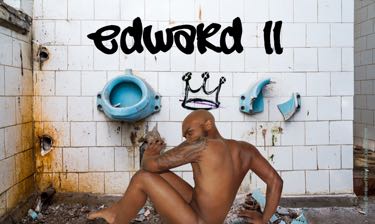
-
When it comes to sheer brio of presentation, few directors in Boston can rival David R. Gammons. And when you combine his conceptual brilliance and visual ingenuity with a dynamic performer like Maurice Emmanuel Parent, the result can be spellbinding, as is frequently the case in Gammons’ brooding, sensual, and suspenseful production of Christopher Marlowe’s Edward II. ... Director Gammons again illustrates his gift for immersing you in the worlds he creates onstage — a gift evident in his buoyantly joyful The Comedy of Errors at Actors’ Shakespeare Project and the spooky shock-fest of his Hand to God at SpeakEasy Stage Company, just to name two. His Edward II manages to seem both of its time and of our time.
– Dan Aucoin The Boston Globe
-
Erotic obsession, political machinations, hubris derailed by the spinning of Fortuna’s wheel — Edward II has everything you’d want from a great episode of House of Cards, or an Elizabethan-era history play. Director David R. Gammons’ freshly conceived production of Christopher Marlowe’s drama is unrelentingly moody and devilishly stylish; to look away for a moment is to risk missing the next gorgeously sculpted stage picture, often rendered through the interplay of light and shadow... What’s clear is that this humid, sometimes spooky rendering of Edward II, ... offers a bounty of outstanding work from a deeply engaged creative team. Lots of people seem to be reaching their high point of recent seasons, all at the same time.
– Jeremy D. Goodwin WBUR's The ARTery
-
One of the great strengths of this production is its attention to the sensuality of the relationship between Edward and Gaveston, and gives several elongated, almost wordless, scenes to depicting the intensity of their physical involvement. These beautiful and graceful scenes offer welcome pauses among the raft of words employed otherwise in disputes about power and authority. Rather than seeming lurid, the relationship between Edward and Gaveston, as depicted here, is poetic and transcendent. Though Gaveston is portrayed initially as a sensual seducer of sorts, the trajectory of the relationship is towards something more clearly honest and open. The final scenes in which Edward and Gaveston climb a fire ladder towards the light of heaven accentuates this evolution and emphasis. Director David R. Gammons has managed, within the relatively limited confines of the spaces of the Charlestown Working Theater, to create the sense of a tragic political drama with enough kinetic action to supplement the steamy passion. There is quite imaginative use of the space at hand, and interesting lighting and sound add considerably to the effects. Bathtub scenes employing full frontal male nudity notably embellish this production.
Hand to God

-
All sorts of demons are unleashed in Hand to God, a sulfurous comedy by Robert Askins that twists the classic coming-of-age tale into a new and jagged shape. Yes, there will be blood, along with some good nasty fun, as startling events unfold in the life of Jason, a Texas teenager possessed by a satanic sock puppet, Tyrone. Picture Kermit the Frog gone very, very bad. The lad’s transformation from dutiful son to ferociously profane rebel engenders considerable dismay in his mother, Margery — although it’s not long before Margery lifts the lid on her own id, with tumultuous results... But the playwright’s onrushing energy seldom flags, and neither does that of David R. Gammons’s production of Hand to God at SpeakEasy Stage Company... A past master of theater-as-steel-cage-match, Gammons brings a genuinely unsettling edge to Hand to God, which recently wrapped up a run on Broadway. But the director also clears enough emotional space for the occasional heartfelt moment to hit home — and such moments are necessary to make us care about the people onstage and keep the play from registering as merely a macabre cartoon.
- Dan Aucoin, The Boston Globe
-
SpeakEasy greeted 2017 by bringing the hot Broadway hit Hand to God to the BCA. Robert Askins' play about a young Christian boy and his possessed, twisted sock puppet buddy Tyrone is amusing, dark, and staged to great effect by director David R. Gammons. SpeakEasy’s production uses rich sound, versatile lights, and nifty curtains to capture the collapse of a Texan church basement into Hell (sound design by Andrew Duncan Will; lighting design by Jeff Adelberg). Much as in his production of Necessary Monsters, Gammons electrifies the production with effective strobe lights and ominous, distorting music. Cristina Todesco’s set captured five different locations with these elements, along with some discreetly wheeled furniture. Jonathan Little’s puppet design charts Tyrone’s swift evolution throughout the play, and Purcell’s deft manipulation of Satan incarnate shone under the puppetry direction of Roxanna Myhrum.
- Fabiana Cabral, My Entertainment World
-
This production is brilliantly directed by David R. Gammons, and features a stunning cast. Be aware that despite the fact that it is a play with puppets, this is not light family entertainment. Imagine that Jim Henson had been asked to write a mash-up of The Exorcist, Equus, and Rosemary’s Baby. The result would be something like the feel of Hand To God. ... The play is ribald, sacrilegious - bordering on blasphemous, and profane. It is not for the faint of heart nor for the easily offended. You have been warned. Having issued the aforementioned caveats, I will say that this production of this difficult play is superbly well-executed. The plot deals with an angry and confused teenager, Jason, (Eliott Purcell) reluctantly taking part in his widowed mother's attempt to find new meaning in life by creating a puppet ministry in the basement of their church. His puppet, Tyrone, takes on a life of his own, spewing forth venom and fomenting violence and chaos everywhere that Jason turns his haunted hand. The playwright is inviting us to ponder whether this is a complex psychological mechanism at work, whereby Jason is expressing his rage over his father's death, his anger at facile Christian answers to deep question, and his repressed sexual awakenings. Or is Tyrone truly possessed of the devil, able to wreak havoc in supernatural ways? Mr. Purcell shows great range in his ability to toggle back and forth between Jason and the voice of the increasingly aggressive voice of Tyrone. His physical, emotional, and vocal agility is on display here. It is a remarkable performance that should not be missed.
- Al Chase, White Rhino Report
Necessary Monsters
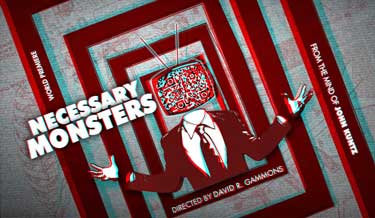
-
There’s a world premiere onstage right now at SpeakEasy Stage Company that rattled my cage; in fact, it’s staged in a cage, the audience peering in from either side as NECESSARY MONSTERS took shape before us. Award- winning actor/playwright John Kuntz and award-winning director David R. Gammons along with a cast of Boston’s best actors have cracked open a line from Jose Luis Borges’ “The Book of Imaginary Beings” and confronted us with the monsters we create to explain and expel the dark sides of our lives: the bad things that happen without, and the ugly, furious impulses that bubble up within.
Kuntz and Gammons have channelled the zeitgeist onstage, and conjured a remarkably vivid, potent underworld, the palpable truth of which reaches past our conscious experience. I mean this play lingered; the night I saw it, I actually dreamt that I saw it again, with my daughter, who in the dream got up from her seat in the audience and interrupted one of the actors in the middle of the play, tapping him on the shoulder– as I sat horrified! The actor later thanked ME for her interaction, after which I frantically searched for my daughter who had mysteriously disappeared. (Get me a playwright.) OK. That’s TMI– but this work is deeply unsettling and clearly a testament to the precision of the stagecraft, the inventiveness of the actors, and the veracity and clarity of the playwright’s vision.
- Joyce Kulhawik, Joyce's Choices
-
“Necessary Monsters” is an eccentric, dark delight. Like much of Kuntz’s work, the two-hour one act play is surreal and non-linear, challenging the audience from the moment they walk into the theater until the credits scroll. Don’t think I’ve flubbed the facts or that I’ve got my mediums twisted; there is no curtain call, no final bow. A reappearance of the triumphant eight-person ensemble cast (Kuntz among them) would have likely sparked a standing ovation from Sunday’s audience, but instead we hesitated and dithered about whether it was the right time to clap as we fumbled with our jackets and scarves, ready to turn to our neighbor and discuss the intertwined narratives, the souls on the road to tragedy. ... Smart set design and careful blocking keeps the constant use and disposal of props from unraveling like a dropped spool. Each piece does nestle in nicely next to the rest; as jarring as the transitions can be, they always feel right.... More than just an exercise in avant-imagination, “Necessary Monsters” is blisteringly funny and critical ...
- Susanna Jackson, Dig Boston
-
Puzzlemaster John Kuntz has concocted a real doozy with “Necessary Monsters,’’ an elaborate, seriocomic maze of a play now receiving its premiere at SpeakEasy Stage Company under the expert direction of David R. Gammons.
Alternately intriguing and exasperating, brilliant and self-indulgent, “Necessary Monsters’’ takes us on a journey into the darker regions of impulse and appetite while also exploring that most nonlinear of phenomena, memory. Kuntz marries elements of Pirandello and Grand Guignol as he toys with our perceptions, not just blurring but erasing the lines between reality and fiction, past and present, actual connections and imagined ones.
- Don Aucoin, The Boston Globe
The Comedy of Errors
-
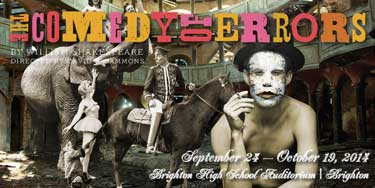
“... One of the weirdest, wildest, and most uproarious Shakespeare stagings you’ll ever see ... Gammons’s conceit is that this Comedy of Errors is being rehearsed by a barely competent carnival troupe whose company includes fake Siamese twins. Sarah Newhouse and Richard Snee, attached at the hip by a strap, play characters who regularly appear together, first the Duke of Ephesus and Egeon, and then Adriana and her sister Luciana. Not until the rehearsal reaches act five does the troupe realize that the Duke, Egeon, Adriana, and Luciana will all have to be on stage at the same time, whereupon a wild flurry of desperate improvisation ensues.
In short, this is The Comedy of Errors as it might have been presented by the hapless rustics from A Midsummer Night’s Dream, only with supremely accomplished actors. Clocking in at just an hour and 45 minutes, with no intermission, it’s a blitzkrieg of knockabout fun. It’s also clearly enunciated and surprisingly easy to follow, even if you’ve never read the play. ... Nothing could be more poignant than the final face-off between the twin Dromios, who came into the world together and, in a gesture of how we’re all halves of each other, leave the same way, hand in hand. Rarely is Shakespeare so hilarious and yet so moving.”
- Jeffery Gantz, The Boston Globe
-
Gammons’s use of theatrical clowning is particularly effective. Egeon’s monologue on the birth of his sons and their servants, followed by the loss of his wife and half of each pair at sea, is accompanied by an elaborate dumb show that introduces the troupe. In other scenes, absurd lazzi play out in the background, as when Adriana and Luciana savor a pair of toilet brushes as if they are the main course.
Gammons, doubling as scenic designer, outfits the stage with haphazardly mounted posters and lighting effects, suggesting both the dilapidated condition of Snoo & Snee’s Sideshow’s latest home as well as the uncertainty about how long the troupe may be welcome.
Gammons ... places his emphasis on palpable desperation, a sense of angst symbolized by Egeon’s death sentence and the possible end of Snoo & Snee’s company if this show does not succeed. In this imaginative unity of script, action, design, conceit, and theme, this staging of Comedy of Errors is one of Gammons’ more fully realized productions.
- Ian Thal, The Arts Fuse
-
“They are the most gloriously written plays of all time, bursting with riches of language that continue to stagger the imagination more than four centuries after they were created. Yet many recent Shakespeare productions hereabouts have placed less emphasis on those glittering words than on boldly arresting imagery, whimsical concepts, and a freewheeling physicality that marries calisthenics to vaudeville — and not just the comedies, either, but also the tragedies, romances, and histories. When it succeeds, as with Actors’ Shakespeare Project’s deliriously entertaining The Comedy of Errors, we’re reminded that Shakespeare intended his works to be performed before live audiences, not to gather dust in the bin marked “dramatic literature.”
A little over a week ago, I sat amid a crowd of high schoolers at a morning performance of Actors’ Shakespeare Project’s The Comedy of Errors at Brighton High School, directed by the always-ingenious David R. Gammons. The topsy-turvy scenic design, also by Gammons, offered some hints as to the mayhem about to ensue. A merry-go-round horse was suspended upside down over the stage, and a large clock face was tilted on its side upstage.
Gammons’s play-within-a-play concept was that an inept carnival troupe was attempting, with fits and starts and botched lines and wildly over-the-top performances, to put on Comedy of Errors. The result was a state of perpetual pandemonium that kept the teenagers — a demographic notoriously leery of Shakespeare — convulsed with laughter.
- Don Aucoin, The Boston Globe
The Whale
-
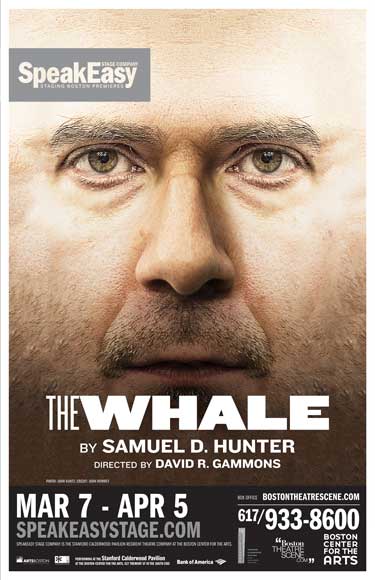
To his credit, director David R. Gammons does not make it easy to look past that appearance; does not make it easy, period. Profound loss and grief underlie Charlie’s years of compulsive, self-destructive eating, and Gammons — while steering clear of cloying excess — makes sure we feel the pain radiating out in all directions from the sofa where Charlie now spends his days and nights. When he needs to go to the bathroom, Charlie requires a walker, and Gammons lets those scenes play out with real-time laboriousness. Gammons directed Kuntz’s “The Salt Girl’’ and “The Hotel Nepenthe,’’ and “The Whale’’ represents another satisfying collaboration.
– Don Aucoin, The Boston Globe
-
As directed by David R. Gammons, the current production is thought-provoking. The technical credits, from the s cenic D\design by Cristina Todesco (early landfill décor), to the wardrobe supervision by Gail Astrid Buckley (including the rental of the fat suit from the New York production), eerily effectivel lighting design by Jeff Adelberg, and even more eerily significant sound design by David Remedios (waves, whales and wheezes), are extraordinarily contributive to Charlie’s surroundings. A lot of attention to detail (the mammoth size of the blood pressure cuff, or the wallpaper on his laptop with a shot of Haystack Rock on the Oregon coast, for example) helps convey just how intensely constricted Charlie’s existence is. No one who sees this production will regret spending the time with this pathetic central character as he progresses from claustrophobic victim to eventual inspiration (at least for his daughter , if not for his online students). He and we may finally find the empathy he had sought, in the words of one treasured book review of “Moby Dick” that becomes a pivotal piece: “This book made me think about my own life. This book made me think ...” So should this play.
– Jack Craib, South Shore Critic
-
The Whale speaks quite strongly in its own voice to life choices, family connections, self as well as social acceptance, medical insurance costs and the overall human condition. This is a wonderful production of fine acting. All of the actors perform exceptional characterizations. Each one is distinctive, personally magnetic and realistically recognizable. The direction by David R. Gammons is deft. From the painful hard to bear movements of Charlie, to the methodical Medical procedures of Liz to the the teenager's defiant dance of Ellie, each actor's motion and position underscored their emotions and dialogue. The set is a mess, but this was done on purpose. Not only is the refuse and detritus strewn all over the stage to reflect Charlie's gluttony, but it is also symbolic of the waste of lives. Cristina Todesco should be congratulated for the garbage underfoot, across the stage and as part of the narrative. Gail Astrid Buckley's "fatsuit" for Charlie is rather remarkable as well. The Whale is not a fun play to watch. But it is a drama worth seeing about the human condition, its ugliness and a few of its better aspects. It may be one of the best acted plays of the season.
– Mark Favermann, Berkshire Fine Arts
The Motherfucker with the Hat
-
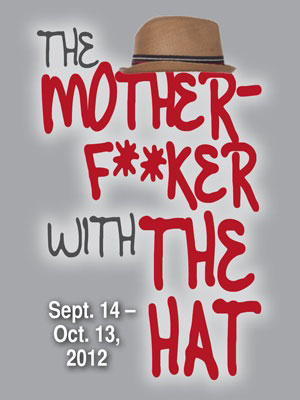
It’s a very bumpy ride for Jackie from that point on — and a satisfying one for connoisseurs of crackling dialogue and skilled acting like the kind on display in SpeakEasy Stage Company’s first-rate production of “The [Expletive] With the Hat,’’ directed with propulsive force by David R. Gammons. Gammons, who helmed “Red’’ at SpeakEasy last season, sustains an air of scorpions-in-a-bottle tension, mystery, and incipient chaos throughout “Hat,’’ a sense that one wrong move could prove the undoing of people who are all too accustomed to making wrong moves.
– Don Aucoin, The Boston Globe
-
The sets are bare bones –- and that’s exactly where the playwright, David R. Gammons' smart direction, and these visceral performances take us –- right down to the nitty gritty of these characters scraped bare before us, no defenses, in clear view of themselves and each other. After all the mind games, rationalizations, screaming and yelling, drugs, sex, and alcohol, recovery comes down to this simple, difficult truth: “In order to change, you got to change.”
– Joyce Kulhawik, Joyce's Choices
-
The dark comedy, making its area premiere just 18 months after debuting to acclaim on Broadway, is raw in its emotions as well as in its brief nudity and the countless f-bombs and other profanity telegraphed by the title. At SpeakEasy, that rawness is enhanced by the physicality and high emotion of David R. Gammons' seering, yet often playful, direction and his stark staging. "Hat" is about people whom society often considers losers as they struggle with their own shortcomings and loyalties, and those of people they care about. Guirgis has said the play stemmed in part from recognizing that while 12-step programs may be perfect, the people in them are imperfect and "works in progress." There are no easy answers for people in that situation, and Guirgis doesn't give them to his characters, either, or to those watching a pivotal few days in their lives spin out of control.
– Kathi Scrizzi Driscoll, Cape Cod Online
Red
-

When the canvas disappears and lights come up, they reveal a huge, cluttered studio, with high banks of smudged glass shutting out sunlight. Two huge paintings hang on either side --- subdued, misty color-abstractions with the unmistakable stamp of Mark Rothko's vision. … And the round, bald little man who makes them --- played to perfection by Thomas Derrah --- is a Vesuvius of pugnacious energy. He demands his student stand and breathe in a painting, living with it, communicating with its subtleties and implications. … And taller, leaner, younger Karl Baker Olson is the perfect foil, growing in awe, in admiration, and finally in question and criticism of an art so ethereal it leaves the humanity of the beholder out of the equation. … This is an exciting, breakneck journey, and it's easy to think the two men slugging it out on stage are creating it out of themselves alone. That is because Christina Todesco's magnificently detailed set, Bill Barclay's deft sound design, Jeff Adelberg's lights, and even Properties Master James Wilkinson's sea of ordered, scruffy clutter let's these very real human beings live. And, holding all these together, Director David R. Gammons has made a masterpiece.
-
"Red," John Logan's fictional treatment of painter Mark Rothko's famous commission for the Seagram building in New York, is being given an intense production at SpeakEasy Stage Company in Boston, under David R. Gammons' expert direction. It is a play that reveals the life of a troubled artist who saw himself on par with Turner, Titian, Michelangelo, and Matisse, who was living at a time of seismic changes when Americans would soon seek to canonize new artistic masters. The production is remarkable for the superb performances by Thomas Derrah and Karl Baker Olson as artist and assistant. … Director David R. Gammons is to be lauded: he has staged Logan's challenging script with clarity and freshness, and he takes us on a red-blooded journey into the very heartbeat of Rothko's flawed genius.
– Robert Israel, Edge Boston
-
At first blush, “Red" seems like an art history lecture dressed up to look like drama. But in the hands of Thomas Derrah, and under the deft direction of David R. Gammons, SpeakEasy Stage Company's production quickly becomes a suspenseful story with life-and-death consequences. … The intellectual exercise is fascinating, but Derrah makes it even more compelling. He delivers a magnetic performance so full of detail, so rich in body language, it's impossible to take our eyes off him as he prepares to prime a canvas - shaking out the brushes, inhaling deeply, looking at the canvas, then looking away, as classical music swells on Rothko's record player. … Director Gammons conducts the action like a dance, and even in stillness, Derrah communicates volumes. … “Red" offers a captivating insight into the creative process, but more than that, it illuminates an artist's need for an audience and the terrifying vulnerability that creates.
– Don Aucoin, The Boston Globe
Medea
-
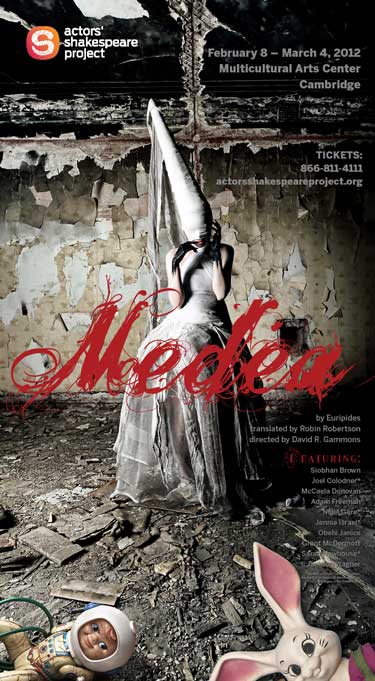
David R. Gammons' staging and Susan Dibble's choreography connect the women's plight to Medea's actions. Medea's crime could cause repercussions in the community and encourage more abuse between the men and the women in Corinth. Actors' Shakespeare Project's production of Medea provides a truly human struggle that is not unlike “true crime” accounts of our present day. One wonders what will happen to Medea and Jason. Nothing is clearly resolved (unlike a Shakespearean tragedy where the main characters die). The consequences of their actions are still to be weighed.
-
This tragic drama is stark, cruel and direct. Unlike Shakespearean tragedy, with all of its ins and outs, and all of its intricate language, this is clear and to the point. We know what goes on and there is not too much dithering about it. … Here, in Medea, everything is tight from the outset and all one needs to do is to touch it to see everything fly apart. The catharsis that results is a kind of penetrating throb, one that does not work its way into much of a knot, but which simply hurts. And there is something so unremittingly harsh about Euripides' portrayal that nothing abates it. The current production transmits that harsh directness exceptionally well.
-
But an underlying theme of this generally admirable ASP production is the subtler truth that Medea is very much like “other women" in one crucial way: She is subject to the sudden, arbitrary, and unfair changes of circumstance that come of living in a world where men make (and remake) the rules to suit and benefit themselves. This implicit notion of Medea as universal woman - despite the monstrousness of her deeds - sustains an interesting tension in the well-acted production, directed by the ubiquitous David R. Gammons, who just wrapped up “Red" at SpeakEasy Stage Company. Israel, attired in a long black gown, delivers a harrowing performance that makes clear that when Medea challenges the established order in an act of murder, it is also an act, spiritually speaking, of self-slaughter.
– Don Aucoin, The Boston Globe
The Farm
-

With its ambitious blend of John le Carre and Franz Kafka, The Farm is anything but comic. Gammons and his creative team, especially sound designer David Remedios and lighting designer Karen Perlow, conjure a brooding atmosphere, including several minutes at the beginning of the play that unfold in complete darkness. Dale Place, so memorable as a supernatural postman in New Repertory Theatre's production of Steve Yockey's afterlife: a ghost story, delivers a mesmerizing performance in The Farm as another kind of spook. Finn is bitter, burned out, and disillusioned. Place conveys the compelling sense of a man who is determined to keep the door closed on his past but knows down deep that it's catching up to him, complete with misdeeds that were either perpetrated in the name of intelligence-gathering or were the result of collateral damage to his own psyche. Parker, by contrast, is an up-and-comer determined to prove herself to her superiors after switching to the CIA from the Secret Service. The way to do it is to get Finn to spill the beans, and the protracted verbal fencing match that ensues between her and Finn seems to be a collision of opposites. But in one of numerous resonant moments in this fine play, The Farm ends with a jolting final image that suggests they may not be as different as she thinks.
– Don Aucoin, The Boston Globe
-
Ultimately the tensions between Finn and Parker reach a resolution that is at once surprising and highly dramatic yet far from unreasonable. Audiences are not likely to forget that resolution or, for that matter, this arresting drama. Premier director David R. Gammons kept the volleys of charges and countercharges as well as opposing philosophies about the CIA between Finn and Parker as rapid and rich as a championship tennis match. Dale Place turned Finn, arguably his best role and performance in recent years, into a tour de force combination of conflicting emotions as well as frustration boiling over into a properly scary outburst. Lindsey McWhorter smartly underplayed as Parker, building the new guard agent's reservations about Finn with striking gestures and vocal insinuation. Noel Nacer made the most of the Berliner's telling moments with Finn and especially Khalil's movement around the stage and in front of the audience as he seems to wear away at Finn's conscience.
– Jules Becker, The Bay State Banner
-
The actors for the play are fantastic, though the roles that they have play with a strange kind of chemistry. While Parker has to keep a steady professional demeanor about her and "The Enemy" remains a menacing sort of silent throughout most of the play, the emotional swaying and empathy that the scene evokes comes from Agent Finn almost exclusively. Luckily Dale Place carries this weight with fantastic, skits of frantic emotional changes from hard nosed, angry Irish agent to emotionally distressed rambling mad man and back again. This is not to take away anything from the abilities of both Lindsey McWhorter and Nael Nacer, whose stone wall deliverance is used to lay the setting of an agency that takes life and death as part of statistical analysis and the menacing, un-answering specter of guilt that comes to its employees. If a fault has to be found with the play, it is only that because is a send up to the spy genre, it does have some predictable beats and twists that are prominent in most espionage stories. This is however over shadowed greatly by the many other themes that McGough has woven into the story and Gammons has brought out in its production. The topics presented in The Farm range from the changing of the United States in the new century, struggles against and for authority, life's potential to be wasted or preserved, all the way to the delicacy of the human mind and conscience.
– Anthony Geehan, New England Theatre Geek
Hotel Nepenthe
-

... David R. Gammons's jumbled dream of a production, unfolding before a series of dressing rooms with bits and pieces captured by a video camera, is both theatrical and elusive ... Moreover, the director/designer has assembled a cast that gets the collision of whimsy and yearning in Kuntz's work almost as well as he does. Marianna Bassham, Georgia Lyman, and Daniel Berger-Jones juggle their dodgy and haunted characters as smoothly as they do their outfits and wigs.
– Carolyn Clay, The Boston Phoenix
-
... David R. Gammons masterfully does triple duty as director, scenic director and costume designer. He divides the rear of the stage into four cubicles, like department store dressing rooms, with rods holding the costumes on hangers in front of them. The main acting area becomes in turn a hotel room or another locale where the action takes place. Gammons pushes the pace to fast forward, often blocking one scene overlapping the next to prevent the audience's attention from flagging. A somewhat bizarre curtain call delivers an antic ending.
– Iris Fanger, The Patriot Ledger
-
... They say that the only constant is change. Physicists think that this is more literally true than we know; Kuntz and Gammons take the stupefying possibilities and turn them into a crystalline work of theatrical art. If changing reality to our own preferences were possible, one might wish for The Hotel Nepenthe to have a longer run; as it is, we must content ourselves with a brief passage through the eye of an inter-dimensional storm ...
– Killian Melloy, EDGE Boston
Cherry Docs
-

“The realms traversed by the play embrace religious notions in conflict and egos struggling against crushing burdens of despair, but at its core the play is driven by a sound moral argument: good and evil may be real and forceful components of human experience, but they are never simplistic and never hermetically sealed. Good people can do evil things, and those floundering in the depths of wickedness can still struggle toward a lifeline of hope ... Director David R. Gammons aims every aspect of the production squarely on the mental and emotional stress that Mike and Danny endure, heightening the dramatic question: will they break? Or will they emerge stronger than before? The answer is surprising and affecting, both to the heart and the intellect. In terms of production values, writing, direction, design, and topicality, Cherry Docs is first-rate. New Rep has done plenty to be proud of, but this sensational production is a standout even by New Rep‘s standards.”
– Killian Melloy, Edge Boston
-
“The power of this bracingly intelligent play derives less from its explosive moments than from the interior struggles that register on the faces of two exceptional performers -- Benjamin Evett and Tim Eliot -- when they are not saying a word or breaking a thing ... Director David R. Gammons adroitly sidesteps the risk of cliche, in part by demonstrating the same gift for compelling stage imagery he showed with last year's production of John Kuntz‘s The Salt Girl at Boston Playwrights‘ Theatre ... With alternating force and delicacy, Evett expertly traces Danny‘s journey from his early, fierce certitude to a growing sense of imbalance as his inner conflicts take hold. As Mike, Eliot communicates the skinhead‘s loathsome qualities but also the human stakes as one hate-poisoned youth tries to grope his way toward a new understanding of the world ... If you see Cherry Docs -- and you should -- chances are you‘ll be thinking about it long after you leave the theater.”
– Don Aucoin, The Boston Globe
-
“Two actors take the stage and stand in a severely angular, harshly lit, grayish-white oblong room, narrowly pointed at one end, wide open to the auditorium at the other. The older man wears a neat, dark suit with a white shirt and red tie. The younger man is dressed in a white prison jumpsuit, barefoot before donning white slip-on sneakers. His head is shaved. There is a stark contrast in their visual impact upon us and we think we know them. We don‘t know them at all. Over the course of approximately 90 minutes, we learn who they are and who they will become, thanks to the precise detail and incredible depth of writing by Jewish-Canadian playwright David Gow, the compelling direction of David R. Gammons, and the riveting, realistic portrayals by Benjamin Evett and Tim Eliot ... It is impossible to sit through Cherry Docs without beginning to play around with your own views of humanity, tolerance, fear, hatred, love, and forgiveness. This is a play that will make you think and hold your interest long after the lights go down. New Rep is to be applauded for staging this challenging work.”
– Nancy Grossman, Broadway World
The Salt Girl
-
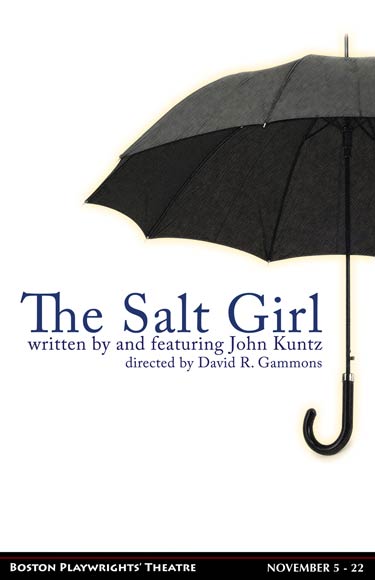
“If someone told me that a play that included a man doing a techno dance in a full body panda suit would be my favorite show of 2009, I would never have believed them, and yet sitting here looking over the program for Boston Playwrights' Theatre's The Salt Girl, I cannot help but relive the flood of emotions I felt when I saw this show on Saturday night. Was it the handfuls of Fruity Pebbles being thrown into the audience? Perhaps the hunks of celery that Actor and Playwright John Kuntz hacked apart with a meat cleaver and threw at audience members crunching all around me in the otherwise silent theatre? It could have been the breathtaking set, a wall of televisions glowing ominously and flickering with film clips and pictures, as if we were seeing directly into the mind of the character, or it could have been delightful sound-scape which seamlessly led the audience through time periods and state of mind (Adam Stone should be commended). I'm not sure I could pinpoint one detail of this thrilling play that could define its perfection, but as my companion and I agreed, we would be forever changed for having seen it.”
– Shannon Rosa, Boston Theatre Review
-
“John Kuntz gives an exceptionally brave performance in The Salt Girl, and not just because he performs one scene in the nude and another in a panda suit. That may make The Salt Girl sound gimmicky. It's much more than that. True, this one-man play, written by the actor, has gimmicks aplenty, including a Hollywood Squares-style, floor-to-ceiling backdrop containing nearly two dozen TV sets, on which flicker images that range from humdrum to hallucinatory.
... At bottom, The Salt Girl is a meditation on the power of that big, wounding, and inescapable question: What if? Kuntz explores that question with arresting originality ... Under the inventive direction of David R. Gammons, Kuntz takes a lot of chances, and he asks a lot of the audience within the small Boston Playwrights' Theatre, too. If Quint cannot escape the claustrophobic confines of his mind, neither can we.”
– Don Aucoin, The Boston Globe
-
“There are elements in Kuntz's strange, piquant tale — in which a soupçon of autobiography is ballooned by imagination and then wrapped in a mix of 1970s television, '80s rock, and the occasional Bach cello suite — of the Jon Benét Ramsey murder case, and the formative experiences of a gay man haunted by memories at once sensual and bruising. At one point, Quint spots the heavy-breathing memory man who keeps calling his cell phone afloat in the sky and appeases the specter by donning a panda suit and serving up a committed, mechanically gyrating dance that takes him into the audience and back. But mostly this wounded soul tells his story from the bleak, blinking confines of his father's hospital room, where he tries to connect with a man beyond connection.
For all its ramblings down a memory lane strewn with also-ran candy, sugary cereals, and encomia to celery and The Love Boat, The Salt Girl is the creepiest and most potent thing Kuntz has written since the chilling two-hander Sing Me to Sleep. And in a raw, brave performance in which he sheds most of his zany mannerisms (not to mention his clothes), the actor makes us weep for his peculiar train wreck of a character, serving up painful history and recipes for Waldorf salad, even as we laugh at him.”
– Carolyn Clay, The Boston Phoenix
Blackbird
-
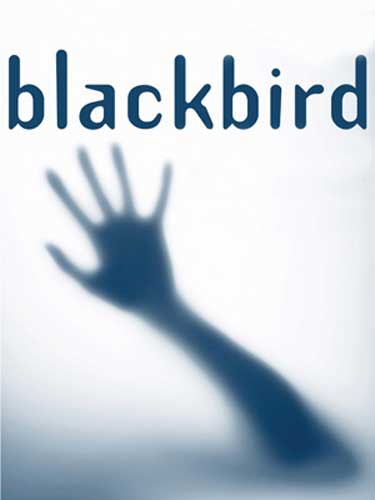
If you’ve got a free evening and a thick skin, you must go see SpeakEasy’s production of “Blackbird.”
And if you haven’t got a free evening, make one. And if you haven’t got a thick skin, grow one. Just make sure you see it.
Director David R. Gammons has established himself as Boston’s go-to guy for gritty theater, and here he proves himself the reigning champ. It helps that he’s working with Bassham and Wilder, two top-notch actors who give career-making performances. Both seem to have subsumed Harrower’s characters into their psyches. Gammons leads them in a sort of dance in “Blackbird,” their attract/repel body language telling the story that their words conceal. Bassham, particularly, all but lays her innards bare. It’s shocking - and humbling - to witness.
...To sit through Gammons’ “Blackbird” is to take a trip into theater’s own heart of darkness. It isn’t easy. It certainly isn’t cozy. But it is unforgettable.
– Jenna Scherer, The Boston Herald
-
...if you agree with Edward Albee that playwrights should be slugging audiences in the face, the aptly named Harrower’ play (at SpeakEasy through March 21) is for you. It was for director David R. Gammons, who felt as if he’d been punched in the stomach after reading it. But don’t worry, you’ll feel no physical pain, except for at least one moment of almost unbearable tension.
...Gammons and his two actors, Marianna Bassham and Bates Wilder, make this play their own, with help from a crack design team.
...Gammons and Wilder and Bassham do a sterling job with the spare, half-sentence dialogue that has its roots in Pinter and Mamet, even if the rawness of the emotions and the surprise twists and turns are closer to what goes on in Neil LaBute’ dramatic universe. Gammons is Boston’ master of ultra-violence. He won an Elliot Norton Award for“Titus Andronicus” before moving on to such pleasant ditties as John Webster ’ “The Duchess of Malfi” and Martin McDonagh’ “The Lieutenant of Inishmore."
I won’t say whether there’ any violence in “Blackbird,” but the way Bassham slams a door or bats Wilder’ tie away attests to Gammons’ ability to transfer that punch in the stomach. And in this case, you needn’t be a masochist to appreciate such a well-delivered blow.
– Ed Siegel, The Boston Phoenix
-
What can be written about "Blackbird" – a play so disturbing, yet so telling in its exploration of humanity’s contradictions on the dark side – that can convey the conflicting emotions of a viewer?
...Under David R. Gammons’ clinical direction, this production is the best example in a long time of drama needing little more than "two boards and a passion.'' The action of the play, set on designer Eric Levenson’s sterile re-creation of a garbage-strewn, corporate lunchroom under white fluorescent lights, is about a confrontation between Una and Ray, 15 years after their illicit affair.
...The image of the title, "Blackbird," is as disconcerting as the relationship between Una and Ray, making one think of birds of prey pecking at the vital organs of road-kill. But, as difficult as it is to watch the situation unravel, it is even harder to look away. I can guarantee that the issues between these people, coupled with the stories we’ve read in the press about sexual predators and the damage they inflict, yet enhanced by two virtuoso performances, will keep "Blackbird" with you long after the stage lights come down.
– Iris Fanger, The Patriot Ledger
The Duchess of Malfi
-
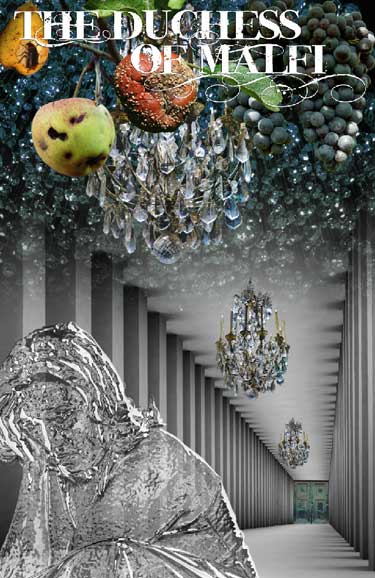
But the best reason to see this Duchess of Malfi is that David R. Gammons is directing it. Both in ASP’s Titus Andronicus a couple of years ago and in The Lieutenant of Inishmore at New Repertory Theatre earlier this season, Gammons has shown that he knows exactly how to stage a gorefest, with or without buckets of blood. So it’s not surprising that his Duchess of Malfi has plenty of violence, but not a drop more than it needs. ... Gammons has slashed the text with abandon, leaving all the juiciest bits and also highlighting the stark central tale ... Gammons sets all this on a long, narrow runway down the middle of the handsomely rugged basement space at Midway Studios, with heavy paneled doors looming at either end and the audience arrayed, like spectators at a grisly tennis match, on both long sides of the stage. We can't help watching the other spectators as well as the action, and their expressions of shock, wincing pain, or incredulity become part of the play itself. As for the action onstage, it is bold and visually dramatic, with a heightened stylization that feels exactly right for the extreme passions boiling throughout. From the first image - the Duchess, swathed in black veils, gazing impassively at us from center stage - through the crisp deployments of servants, the feverish swirling of a madmen’s dance, the curiously beautiful execution with thick scarlet ropes, and on to the final deadly tableau, each moment is at once an arresting image and an action charged with energy.
– Louise Kennedy, The Boston Globe
-
The production exceeds the company’s always-high creative standards, and David Gammons’ direction makes the work accessible to a modern audience. ... The set (by Gammons), light (by Jeff Adelberg), and sound (by Cameron Willard) all mesh flawlessly, creating a tone and an atmosphere that is part haunted house (dig the human bones beneath the floorboards: they don’t come into play in the story, but they do tell us a thing or two about life at court) and part family driven political thriller. ... Gammons reigns it all in, imposing a rigorous, often geometrical discipline on the play’s blocking and overseeing split-second timing on lighting and sound cues. Such careful preparation pays off: events move along with the momentum of a Greek tragedy, charging along unstoppably. ... Under Gammons’ direction, and in the unique Midway Studios location, "The Duchess of Malfi" is pure theatrical spectacle.
– Killian Meloy, EDGE Boston
-
T.S. Eliot famously opined that John Webster saw "the skull beneath the skin." In David R. Gammons’s staging of the Jacobean dramatist’s "The Duchess of Malfi" for Actors' Shakespeare Project, we see the skull beneath the stage. In the director’s scenic design, the 1614 revenge tragedy is played out on a long runway overhung by crystal chandeliers and bookended by gilt-edged doors. But beneath the narrow strip of a playing space are strewn caches of bleached bones: skeletons in the basement — perhaps because, in a milieu so murderous and corrupt, the closets are full. ... As with his plasma-free Titus Andronicus for ASP, Gammons’s staging is stylized. At the center of the runway sits a plexiglass chair occupied at the beginning by Jennie Israel’s duchess ... At ASP, her palace a prison where the comings and goings are propelled by jangling music and the repeated clanging of slamming doors, she dies a stoic, almost triumphant death — far nobler than those of the less savory characters who follow her like dominoes in a work that could as easily have been inspired by an Elizabethan tavern dare to one-up the death count of Hamlet as by a jaundiced world view.
– Carolyn Clay, The Boston Phoenix
The Lieutenant of Inishmore
-

I love this play. I loved it when I saw it on Broadway in 2006, and I love it in its current incarnation from the New Repertory Theatre. Martin McDonagh’s The Lieutenant of Inishmore is a work by a playwright at the top of his game. It’s funny, gross, innovative, poignant and exceedingly well-crafted. ... Having staged the Bard’s gory Titus Andronicus for the Actors’ Shakespeare Project last year, director David R. Gammons is no stranger to a bit of the old ultra-violence. He ranges wide, using the Arsenal Center’s whole stage and backstage, for Inishmore‘s killing grounds.
– Jenna Scherer, The Boston Herald
-
And it’s true that the wretched excess onstage can be disarmingly, almost sickeningly funny; there’s a kind of brilliance to the fury with which McDonagh blows his characters and his story apart. Certainly Wednesday’s opening-night audience had its share of huge, disbelieving laughs, and a couple of them were mine. For that, credit goes not only to McDonagh’s razor-sharp writing, but to Gammons’s skill in keeping the razor’s edge poised right at our throats for the full two hours. His pacing and focus are superb, and the whole production supports and rounds out his vision of the play, from set designer Janie E. Howland’s shabby cottage on a blasted heath to Gail Astrid Buckley’s tatty costumes, Karen Perlow’s incisive lighting plan, and Rick Lombardo’s careful choices of ear-blasting punk and hard rock. Kudos, too, of course, to special-effects designer Stephen Tolin for all the blood and guts.
– Louise Kennedy, The Boston Globe
-
Except that it’s a black farce, not a tragedy, you could call The Lieutenant of Inishmore, Martin McDonagh’s Titus Andronicus. The 2002 Olivier Award winner and 2006 Tony nominee, which is getting its area premiere from New Repertory Theatre (at Arsenal Center for the Arts through November 16), is so rife with mutilation and dismemberment that you might as well direct it with a Cuisinart. Faced with similarly poetical mayhem in the Bard’s Titus, David R. Gammons, who won an Elliot Norton Award for his staging, spilled not one jot of stage blood. Now we know why; he was saving it up! Gammons’s production of Inishmore sets the largest Aran Island afloat in a bucket of plasma: it gushes like Old Faithful and splatters like Jackson Pollock….By the time act two rolls around, with executions nested in executions like Russian dolls and the stage strewn with less-than-realistic-looking body parts, you don’t know whether to cry mercy from Quentin Tarantino or John Millington Synge. But between Gammons’s adroit mayhem management and Rick Lombardo’s sound design, a layering of traditional Irish rebel songs and propulsive rock that adds to the play’s momentum, McDonagh’s one-trick pony canters. And both the acting and the accents are ace.
– Carolyn Clay, The Boston Phoenix
My Name Is Rachel Corrie
-
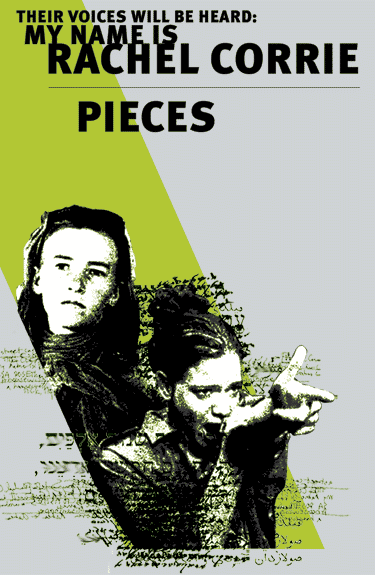
Rachel Corrie is a superlative work, here in a superlative production by director David R. Gammons and actor Stacy Fischer. Comprised of text from Corrie’s journals and e-mails, it was adapted for the stage by actor Alan Rickman and journalist Katharine Viner. The work presents Corrie not as a martyr or an extremist - as she has often been portrayed in the media - but as a precocious, idealistic woman coming into adulthood and reacting to what she sees. The play opens on Rachel in her Olympia, Wash., bedroom and follows her to the Gaza Strip. Her voice is funny, honest and poignant, and through the alchemy of Corrie’s words and Fischer’s dynamic performance, we’re drawn in from the word go.
– Jenna Scherer, The Boston Herald
-
The play’s Rachel Corrie, here portrayed with endearing vitality and quintessentially youthful self-contradiction by Stacy Fischer, first appears huddled under a comforter in her messy room decorated with postcards and stuffed animals, and we realize: Oh, she’s a kid. A college kid, with idealistic dreams of becoming an artist and saving the world, but a privileged, white, American middle-class kid who’s never actually had to face genuine hardship or conflict.
And then she ends up in Gaza. She’s there, the play tells us, to protest the bulldozing of Palestinian homes by the Israel Defense Forces. Most people in the audience already know how that story ends, with her death in 2003 when one of those bulldozers knocked her down. Some of the controversy about the play concerns whether it accurately depicts these circumstances: Was she protecting homes or smugglers' tunnels? Did the bulldozer driver see her? Was her death an accident or a murder?
But the experience of actually watching the play leaves us less interested in those questions, and more interested in the development of a specific, flawed, but fascinating human being. The almost giddy young girl we met at the outset has, by the end, grown into a far sadder, more complicated, and yet still resiliently optimistic woman.
Of course this play tells Corrie’s story from a personal perspective, not a universal or objective one. That’s what makes it a play, not a news story. And that’s what makes it worth watching, worth thinking about, and worth discussing rather than shouting it down. Thanks to New Rep for giving us all the chance to do just that.
– Louise Kennedy, The Boston Globe
-
Downstage @ New Rep, under David R. Gammons’s direction, Stacy Fischer rather emphasizes Corrie’s high-flying, socks-and-boxers-clad cuteness. Living her scattershot if well-intentioned local activist’s life in Olympia, she never stops moving, whether to “Ruby Tuesday” or the self-consciously audacious sound of her own mouth ... Once the character gets to Gaza and her idealism meets its Waterloo, Fischer, growing stiller, captures her horror and her heartbreak. But don’t look for two sides here — or even for an acknowledgment that there are two sides. "My Name Is Rachel Corrie" is a memorial to a sensitive, slyly humorous young woman who wanted to do some good in the world and thought she could by making lists and banners and a commitment, all of which she did with a whole heart.
– Carolyn Clay, The Boston Phoenix
Titus Andronicus
-

“…Gammons directs for actors and audiences, too, with an assured control of movement, imagery, and theatrical space that sends us hurtling into the starkly nightmarish Rome of “Titus” with terrifying clarity and speed…
Through it all, Gammons evokes gruesome violence without stage blood or rubber heads. And, by refusing to distract us with a sensational bloodbath, Gammons focuses our attention on the play’s deeper themes of cruelty, tortured loyalty, and revenge…”– Louise Kennedy, The Boston Globe
-
“…ASP actually makes a valid case for it in an elemental, ritualistic, and very masculine staging surrounded on four sides by audience and what look like cave paintings. Although the gore is understated, the violent imagery is not…Gammons has streamlined the arguably Artaudian script, calling forth the military toughness of its characters…but also their unexpected tenderness… Moreover, despite this contrast of martial brutality and sad sweetness, the production, with its dim but harsh lighting by Jeff Adelberg and effectively mechanistic sound design by Cam Willard, is very much a whole…”
– Carolyn Clay, The Boston Phoenix
-
“ …A circle of stones; the spilling of ashes; some coils of rope; tears; and, of course, blood. These are the elements of the more than impressive production of Shakespeare’s seldom-mounted tragedy ‘‘Titus Andronicus,.. The catalogue of murders, vicious rape, and evil deeds, placed by Shakespeare in ancient Rome but transformed here into modern dress, is nearly beyond human comprehension… Under the skilled and chilling direction of David R. Gammons – who also designed the eerie setting of walls blank except for a blotch of blood and a few animal totems – an all-male cast stalks through the ritualistic presentation that elevates the gore to nearly ceremonial status…”
– Iris Fanger, The Patriot Ledger